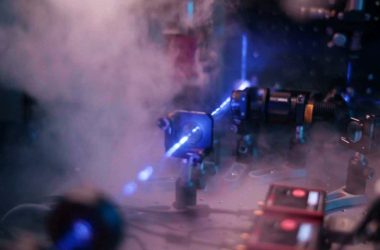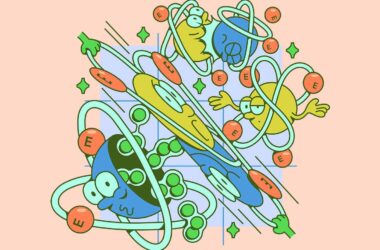A fascinating particle with the ability to remember its past has been successfully generated using a quantum computer. Known as an anyon, this particle has the potential to enhance the performance of quantum computers in the future.
Unlike other particles such as electrons or photons, the anyon possesses a unique quality – it keeps a record of its previous location. Normally, when particles are repeatedly swapped, it becomes impossible to determine if a swap has occurred. However, in the 1970s, scientists discovered certain quasiparticles that exist only in two dimensions, which were later named anyons. Quasiparticles are not actual particles, but rather collective vibrations that exhibit particle-like behavior.
When anyons are swapped, they undergo fundamental changes, and the number of swaps affects their vibrations. Specifically, groups of non-Abelian anyons retain a memory of the swap order, similar to how the strands of a braided rope retain their crossing sequence. However, anyons interact through the quantum phenomena of entanglement, where particle properties are intricately linked across space, rather than through direct physical interaction like the strands of a rope.
Due to their inherent memory and quantum nature, non-Abelian anyons hold promise for quantum computing, even though their existence had never been experimentally proven.
Now, researchers at quantum computing firm Quantinuum, led by Henrik Dryer, have achieved this significant milestone. They designed a new quantum processor called H2, which utilizes ytterbium and barium ions that are trapped using magnetic fields and lasers to create qubits, the basic building blocks of quantum computers.
By arranging these qubits in a pattern known as a Kagome lattice, which resembles interlocking stars seen in traditional Japanese baskets, the qubits exhibited identical quantum properties to those predicted for anyons. The team adjusted the interactions between the qubits, emulating the movement of anyons, and successfully observed and confirmed the distinct swap-dependent changes in the anyons’ properties.
“This is the first compelling experiment capable of achieving non-Abelian topological order,” says Steven Simon from the University of Oxford. He also highlights the importance of the quantum computer’s ability to manipulate anyons, as it aids in advancing researchers’ understanding of this unusual state of matter.
However, not all scientists agree that Quantinuum has definitively created non-Abelian anyons, arguing that it is merely a simulation. Jiannis Pachos from the University of Leeds suggests that the simulation may lack certain properties present in the real particles.
Dryer, on the other hand, asserts that since anyons are quasiparticles, a simulation is equivalent to the real thing. “A unique property of these anyons is that they are not truly physical. They prioritize information and entanglement; therefore, any system capable of generating such entanglement can create the same type of anyons,” explains Dryer.
Topics:
- quantum computing/
- particles








